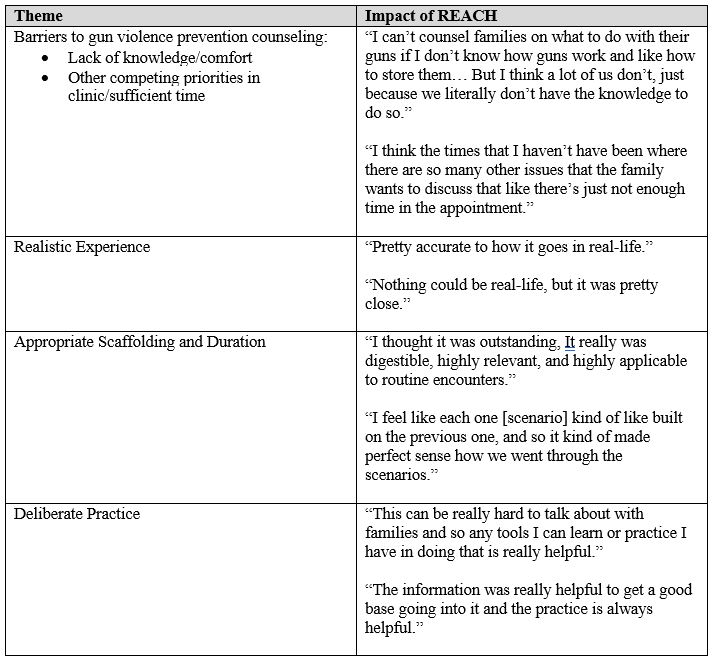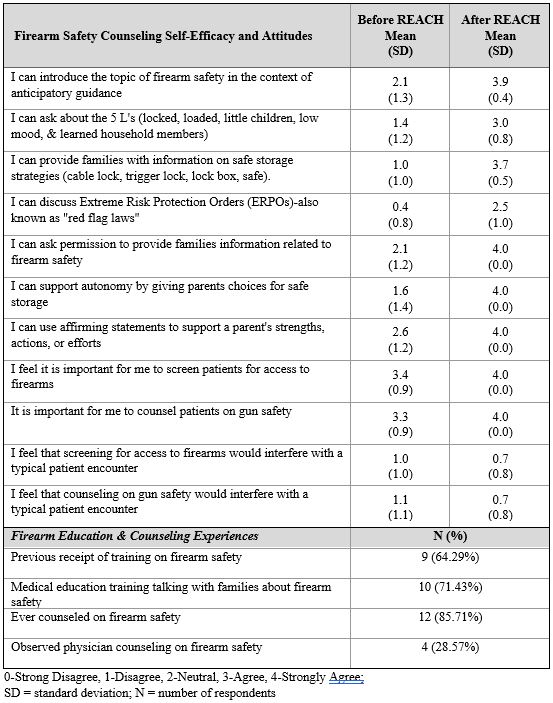Medical Education: Simulation & Technology
Medical Education 6: Simulation & Technology 1
538 - Usability Testing of a Virtual Reality Curriculum to Deliberately Practice Firearm Injury Prevention Counseling
Publication Number: 538.228

Matthew W. Zackoff, MD, MEd (he/him/his)
Assistant Professor
Cincinnati Children's Hospital Medical Center
Cincinnati, Ohio, United States
Presenting Author(s)
Background:
Firearm-related injury is the leading cause of death among U.S. children and adolescents, with ~1/3 of households containing at least one firearm. Many health professional organizations recommend that Pediatricians screen for firearms in the home, counsel about their potential risks and recommend safe storage practices. However, pediatricians often lack the knowledge, skills, and comfort to discuss firearm safety with families. Virtual reality (VR) may provide a safe, realistic environment for pediatricians to deliberately practice firearm safety counseling.
Objective:
We conducted usability testing of Resident Education And Counseling on Household Firearm Safety (REACH), a screen-based VR curriculum, with pediatric residents from two academic medical centers. REACH is a 4-scenario, scaffolded VR curriculum that allows residents to practice firearm safety counseling strategies during simulated primary care visits.
Design/Methods:
Through REACH, participants learn and apply core skills on safety counseling and motivational interviewing with real-time feedback (Table 1). Following the 45-minute curriculum, participants completed a 10-minute semi-structured interview and survey exploring current firearm counseling behaviors in clinical practice, perspectives on the curriculum and VR platform, and self-efficacy related to recommending safe storage practices. Interviews were transcribed and analyzed using thematic analysis with descriptive statistics and paired t-tests used for survey data. Third-year pediatric residents at Cincinnati Children’s Hospital Medical Center (CCHMC) and Massachusetts General Hospital (MGH) were invited to participate via email and REACH was administered over a video teleconferencing platform.
Results:
Fifteen pediatric residents participated in REACH and interviews and 14/15 completed the survey. Participants were mostly female (11/14), between 25-29 years of age (13/14), and Caucasian (10/14). Pediatric residents reported poor baseline knowledge of and comfort with engaging in firearm safety counseling. Core themes from the interviews are described in Table 2. Following participation in REACH, participant knowledge and self-efficacy regarding gun safety counseling increased (Table 3).
Conclusion(s):
Residents reported that REACH was a realistic, informative experience that would positively impact their future counseling behaviors. These data support further exploration of VR to train pediatricians on firearm safety counseling and motivational interviewing as an injury prevention strategy to address the epidemic of gun violence..jpg)


